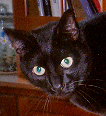I haven't been to Hanoi since 1995 and, like the rest of the country, the city has changed a lot, but in different ways than Ho Chi Minh, where I stopped last summer on my way back from Cambodia. In HCMC, the city center has really been built up. In Hanoi, much of the city center remains as I remember it, with a few tall buildings thrown in, but the outskirts have been developed. I took the early flight to Hanoi so I could spend the afternoon playing tourist.
While it was hotter in Hanoi than in Hong Kong, it's a much more pleasant place to walk, especially when you're in the old part of the city. Whether you're walking on a broad boulevard or in a narrow street, there are loads of trees shading the sidewalks. There was a very pleasant breeze on Sunday, too, which made the 38 degree heat (100+F) very tolerable.
I started my tour walking around Hanoi's old quarter, where shops are still frequently clustered by what they sell -- a group of fabric stores are on Fabric Street, while rice stores are on Rice Street, for example (with those street names in Vietnamese, of course). Although the street hasn't been renamed, there are also about a dozen laptop stores on the same street, all of which look pretty much like this:

One thing Hanoi doesn't have many of -- at least that I found -- is supermarkets. It does, however, have loads of small shops selling groceries and other goods:

While HCMC's cathedral is more famous, I've always like St. Joseph's Cathedral in Hanoi. It looks positively medieval.

After my walk around the old quarter, I headed for more recent history in a park completely dedicated to Ho Chi Minh. My hot walk took me past Hanoi's citadel, with its iconic flag tower and, across the street, what must be one of only a few statues of Lenin still standing anywhere in the world:


I stopped across from ol' Vladimir Ilyich at the Highlands Coffee shop and had an icy lime juice to cool off. It disappeared so quickly that I had another. I might have one every day that I'm in Vietnam.
A few blocks further on was Ho Chi Minh's mausoleum. I didn't stop in to visit because you have to be there quite early in the morning to get in, and you have to be wearing pants and -- did I mention? -- it was quite hot. Plus, I saw Ho in 1995, and I can't imagine he's changed much in the past 12 years. He apparently visits Russia each year for, um, some touch-up work.

Next to the mausoleum is the an area where you can tour Ho's old house and the palace where he lived as president. You can also get a glimpse of several of Ho's cars, which are parked neatly in Ho's garage:

And even better, the exit took me past the back side of the mausoleum, where Ho's cleaners were hard at work polishing the building. I think this will be a long, long job:

I walked back to my hotel via the Temple of Literature and stopped for dinner at a place that's popular on the tourist track because of its combination of good food and its training program to turn street kids into hospitality workers. My last stop after dinner was the infamous "Hanoi Hilton" prison. Most of it has been turned into condo towers, but the developers also created a small museum, which didn't exist in 1995, so while progress has marched on, the city has managed to keep a small piece of history, too. The museum was closed by the time I got there, so I hope to get back during business hours this week if I can squeeze it in.






















































